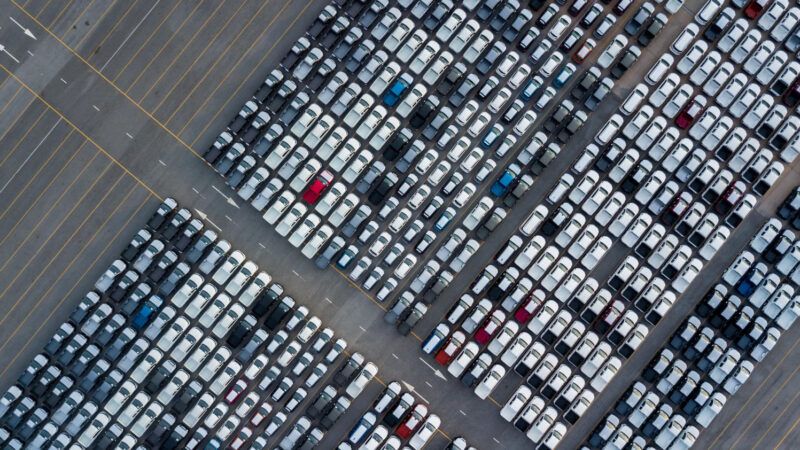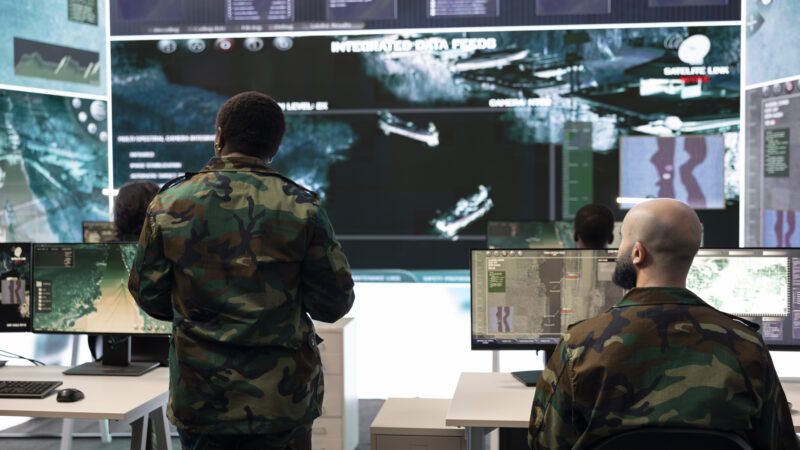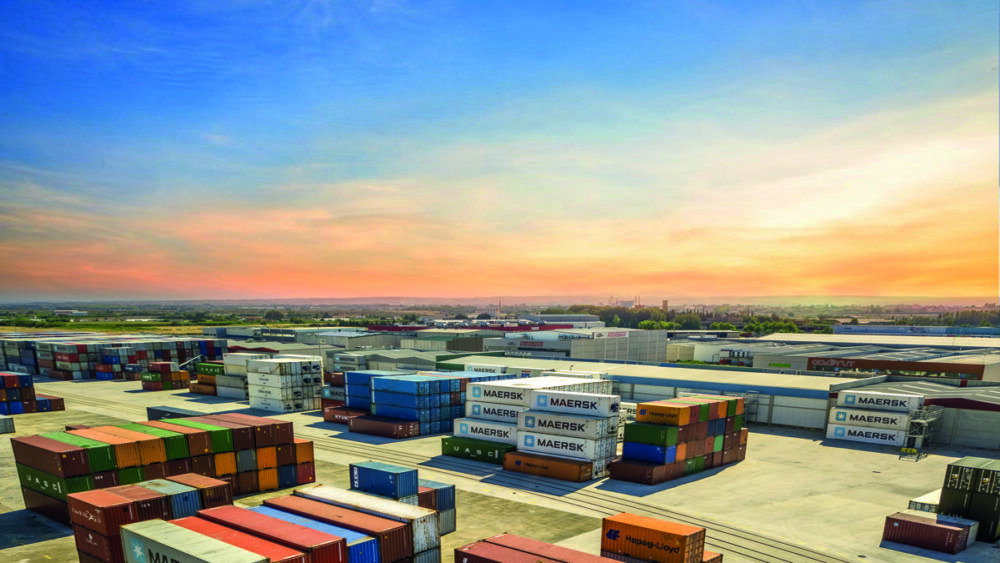 The directors of the most successful inland terminals share the keys of their business models and how they managed to shine in 2020. (tmZ)
The directors of the most successful inland terminals share the keys of their business models and how they managed to shine in 2020. (tmZ)
Inland terminals: successful stories in times of Covid-19
The Port of Barcelona was the first in Spain and one of the pioneers in Europe in developing the port network strategy. In other words, the development of a system of inland terminals (also known as dry ports) connected to the port by rail at strategic points of its hinterland with the aim of bringing its services closer to customers in the interior of the peninsula and beyond its borders. We have asked the directors of the most successful terminals what are the keys of their business models and how they managed to shine in 2020, a complicated year for the logistics chain.
 The directors of the most successful inland terminals share the keys of their business models and how they managed to shine in 2020. (tmZ)
The directors of the most successful inland terminals share the keys of their business models and how they managed to shine in 2020. (tmZ)
In addition to improving supply chain management and being an extension of sea ports, inland terminals or dry ports were decisive during the lockdown caused by the Covid-19 pandemic. They contributed to guarantee transport and supply of goods and registered business volumes that exceeded those of previous years.
This is the case of the following terminals: the Zaragoza Maritime Terminal (tmZ, in Spanish), Perpignan St Charles Conteneur Terminal (PSCCT) and the Monzón Intermodal Terminal (TIM, in Spanish). But also others like those managed by Synergy, APMT Rail and Transportes Portuarios in Noain, Pla de Vilanoveta and Tarragona, respectively.
These terminals have grown in recent years thanks to a combination of different factors: a commercial policy and a management strategy geared towards customer needs, diversification of services, improvement of their infrastructures and especially, thanks to some railway logistics operators that offer a wide range of door-to-door services to their clients that include, among others, rail transport, haulage, customs clearance, equipment management and coordination with the arrival and departure times of vessels.
In the case of the Port of Barcelona, 15% of the containers that arrive or leave its facilities use this means of transport, similar figures handled by some of the large ports in northern Europe, such as Antwerp or Hamburg. In finished cars the percentage rises to 43%.
A public-private cooperation
In Perpignan, Eric Gilbert, managing director of PSCCT, highlights that its mixed legal structure, made up of a public and a private company with the participation of the Port of Barcelona, guarantees them "a great independence from all stakeholders, including rail networks administrators and other combined freight transport operators. This is important because it allows us to serve all the actors under the same conditions,” he emphasizes.
Ramón Adé, managing director of tmZ, with a stake majority owned by Mercazaragoza, followed by the Government of Aragon and the Port of Barcelona, shares this point of view: “Our public-private structure is one of the reasons that today we have become the main railway terminal in inland Spain. Public participation has made it possible to deploy a development strategy for the Aragonese economy through intermodality. The private company, on the other hand, takes advantage of its experience in operational and commercial management so that shippers in the area gain competitiveness,” he affirms.
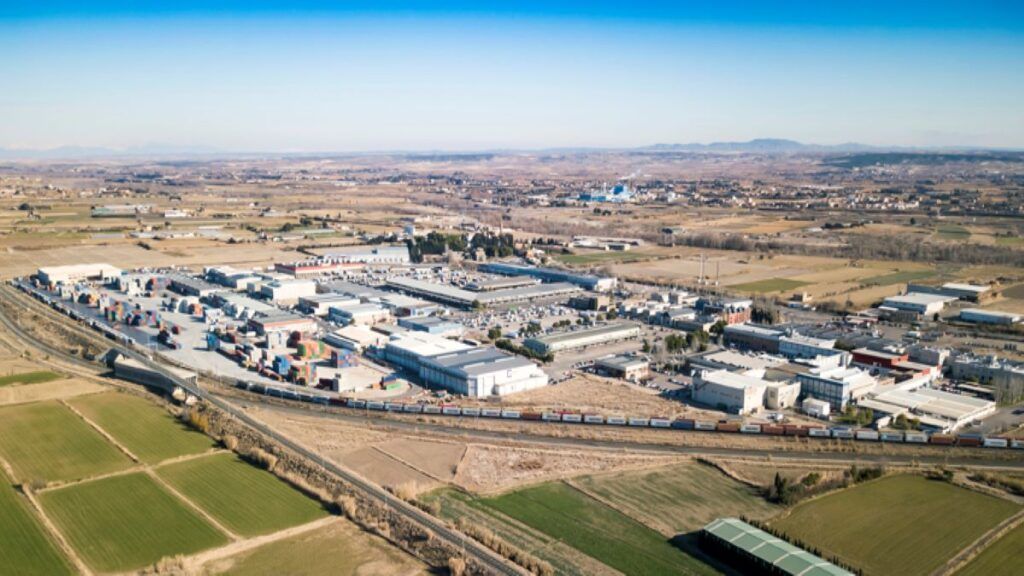
Lastly, TIM was created in 2011 to supply and dispatch cargo to the companies of the SAMCA Group, which owns 90% of the terminal, and one of the largest industrial groups in Aragon. The remaining 10% belongs to Logirail (RENFE). TIM currently manages a terminal for container traffic and another for bulk traffic, AgroTim. As we will see later, the two terminals serve a multitude of clients which differ from the original ones, linked to chemical traffic, pigs, cereals, etc.
These terminals have grown in recent years thanks to their customer orientation, service diversification, the improvement of their infrastructures and especially, thanks to some railway logistics operators that offer a wide range of door-to-door services to their customers
Strategic situation and connectivity
The location of the terminals is another of the keys highlighted by their directors. In the case of Perpignan, Gilbert points out that the geographical location of the terminal has a special importance in the development of its activities, since the two existing rail connections (the old line that runs along the coast and the new high-speed train line that crosses the Perthus tunnel) allow “to connect Barcelona with Paris, as there is no direct line between the Catalan and French capitals,” he points out.
Perpignan also offers connections with Germany and the Netherlands and its director announces that this June the Perpignan-Calais and Perpignan-Calden-Kirchen line will be inaugurated, which will expand connectivity with both countries. According to him, this will significantly increase the volume of goods that pass through the French terminal.
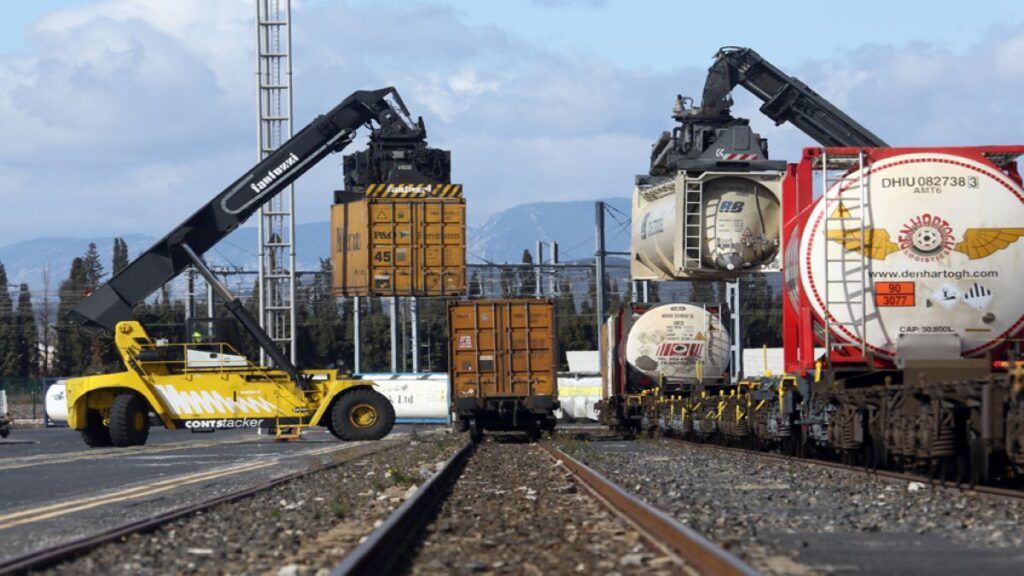
Diversification of products and services
In the case of TIM, its commitment to the railway as a means of transport goes hand in hand with a model oriented towards sustainability. "The majority of imports enter by train and the objective is to boost multi-business rail traffic," explains José Antonio Ramos, its director.
This terminal has opted for diversification as a growth strategy and business model. Thus, in 2019 agroTIM was born, a business unit dedicated to agri-food to boost the logistical development of products that are abundant in this area, such as cereal and corn, supplied to neighboring regions, and also used to feed animals.
"Now we want to incorporate soybeans, which arrive at the Port of Barcelona from Brazil and Argentina, because the flows are more regular than other cereals," shares Ramos. TIM also stands out for another reason: it is the only terminal on the Iberian Peninsula that handles reefer, bulk and dry containers.
He says that the proximity of the slaughterhouse of the Litera Meat company, from the Italian group Pini, located in Binéfar, led to the birth in 2020 of termoTIM, a new refrigerated container business line. "We send a daily train to the Port of Barcelona loaded with meat products for the Asian market," he adds.
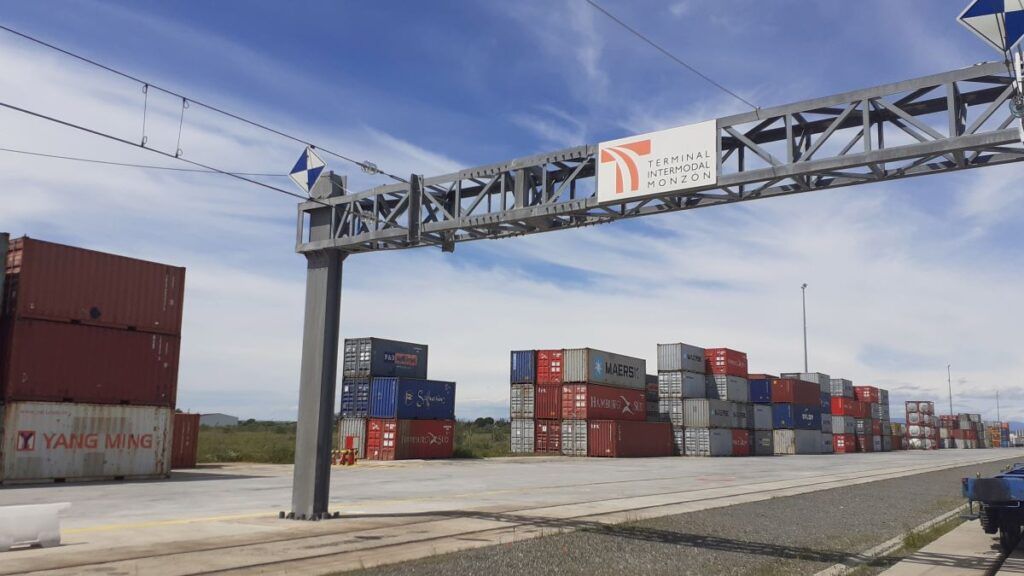
‘Immune’ to the pandemic
Despite the difficulties exposed by the pandemic, in 2020 the three terminals registered volumes that practically exceeded those of previous years.
TIM reached 67,705 TEUs and 1,100 trains, an 8% growth compared to 2019. Ramos attributes these figures to the higher production volumes of the Novapet factory (SAMCA Group) and meat exports.
PSCCT recorded the movement of 39,212 containers, a growth of 9% compared to 2019, when the figure was 35,999. “In the face of the pandemic, we reacted according to the principle of any logistics activity: adaptation. This year, and as a result of Covid, we have changed the way of operating administratively and we no longer exchange physical documents with drivers,” Gilbert explains.
Finally, TmZ ended 2020 with 350,000 TEUs and 3,025 trains. In 2019 it registered 356,675 TEUS and 2,985 trains operated by the terminal. “Agri-food exports, particularly pork and alfalfa, grew during the pandemic. We did observe a greater imbalance between exports and imports that were compensated by a greater number of trains, even though there were empty containers, so we could respond to market needs,” shares Adé.
The port network strategy has been essential to increase the competitiveness of the sector in foreign trade in the regions where these terminals are located
A vision towards the future
The activity does not stop, and each of the terminals plans its future from different perspectives. tmZ, according to Adé, is immersed in adapting its infrastructure to trains of 750 meters, more efficient and competitive, and in expanding the depot space.
TIM is implementing different projects to increase the digitalization of its operations in order to increase the traceability of cargo during the journey or access to the terminal.
Lastly, PSCCT is also in the process of expanding its facilities.
The port network strategy has been essential to increase the competitiveness of the sector in foreign trade in the regions where these terminals are located. They have also contributed significantly to attract logistics activity and, therefore, to generate employment. Nowadays, locations near these terminals are more attractive for logistics centers thanks to high rail connectivity, than others much closer to the Port of Barcelona but lacking a rail connection.
The port network has also served to significantly reduce the carbon footprint of supply chains throughout the northeast of the peninsula.
Lessons Learned
There are some common factors of these shared experiences that we can consider key for this success:
- These are terminals that, in general, began with manageable dimensions. Their growth responded to demand, and they responded by expanding space or improving facilities, far from the mega-terminal model that can jeopardize income during the first years of operations.
- All of them have a strong customer orientation, with a portfolio of door-to-door services adapted to the needs of different users which are in constant evolution.
- In general, the trend has been to diversify their activity, both in products and services, tending to offer more and more added value and evolving from the concept of transport hub to logistics hub.
- Although it varies from case to case, the management models are mainly based on a public-private collaboration.
- There is a great interaction between the inland terminals and the ports they serve. In this sense, it should be noted that these are, in general, multi-port terminals, connecting by rail with various maritime interlocks.
In the following years, inland terminals and ports will have to continue advancing and adapting to the needs of the foreign and logistics sectors in order to continue contributing, as they have done so far, in generating wealth.
Recent examples of this adaptation are the development of rail motorways and refrigerated rail transport. There will be more to come, as all of them are immersed in very exciting and innovative projects.




